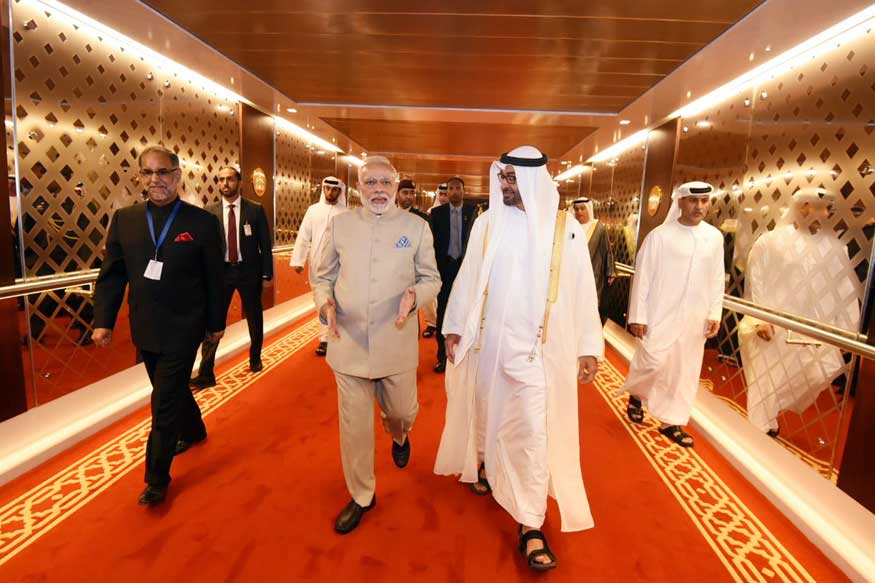
Prominent Indian Strategic Thinker Urges Delhi to Rethink the Middle East
The Highly Regarded Indian Foreign Affairs Columnist C. Raja Mohan Sees a New Dawn in the Arabian Peninsula and Wants Delhi to See it Too
C. Raja Mohan is one of India’s leading foreign policy thinkers and perhaps its preeminent foreign affairs columnist. What Mohan writes matters, and his columns are read widely among India’s political elite. That’s why it’s worth diving deep into a series of Mohan’s columns about the Middle East region over the past six months because he challenges policy-makers in Delhi to shed old prejudices and predilections and see the region for what it is today: deeply divided, strategically vital, and heralding a promising opportunity in the Arabian peninsula. Forget the non-Aligned movement, Pakistan-driven paranoia of the past and look deeper at the strategic shifts taking place, he seems to be saying. Those shifts spell opportunities for Delhi.
The old Non-Aligned mentality in Indian foreign policy that saw U.S allies as part of “Western imperialism” has taken a long time to die in Indian foreign policy circles, and still resonates among some. The other aging attitude that views Middle East allies through the Pakistan lens has also taken too long to die, particularly given the evolving nature of Pakistan’s ties to several Middle East states. What Indian foreign policy elites need, it seems, is an update of their hard drives.
As Mohan notes in one of his columns, “India’s emphasis was on solidarity with Arab nationalism and against neo-colonialism and Western imperialism. Given its preference for ‘secular republics’ in the Middle East, an element of defensiveness inevitably crept up in India’s relations with the religiously conservative monarchies, especially Saudi Arabia.” He argues now that it is in India’s national interest to support reform efforts led by Saudi Crown Prince Mohammad bin Salman and has noted that Riyadh has increasingly de-hyphenated its relations with Delhi, away from a Pakistan first vision.
Mohan is urging Delhi to see the region for what it is today, rather than live with old slogans. Mohan specifically cites the United Arab Emirates as a place of transformative change that can push the broader region in a direction that would be beneficial to India. He also notes “civilizational” bonds between the Arabian peninsula states linked to India via the western Indian Ocean, Arabian Sea, and the Persian Gulf.
This strikes me as a new way of looking at relations that, in the past, were more transactional. “Civilizational bonds,” in Indian strategic thinking, tended to be reserved for old civilizations like Iran, but Mohan has added a civilizational layer to a growing strategic one between India and key Gulf states UAE and Saudi Arabia.
It often struck me as odd that few Indian Prime Ministers would visit the United Arab Emirates regularly until Narendra Modi broke that pattern in 2015, the first Indian PM to visit the UAE since 1981 (he visited again in 2018, and even Congress party leader Rahul Gandhi has made a UAE pilgrimage recently). This lack of attention to the UAE felt to me like a case of foreign policy malpractice given the dynamic commercial relations between the UAE, principally Dubai, and India, not to mention the huge numbers of Indian expatriates — from laborer to senior executive — living and working in the UAE.
For a run-down on the UAE-India commercial relationship, see my piece in Reuters last year – India’s Most Vital Hub City Isn’t in India. I’m also at work on a monograph on UAE-India geo-economic ties, and during the course of research, I’ve often been startled by how deeply these economies are intertwined. More on that coming in these pages soon.
In one of Mohan’s most important columns, entitled “Rethinking the Gulf,” he points to the emerging growth of a “moderate Arab centre” led by the UAE as one that “should resonate deeply with India’s natural ethos and its traditional empathy for modernising forces in the Arab world. Helping the construction of a moderate Arab centre envisaged by Abu Dhabi, then, is very much in India’s interest.”
Critically, he places the movement to push back against political Islam, centered in Abu Dhabi, as not simply an interesting development in the Muslim world, but vital to India and the broader subcontinent’s future. In a column about the visit of Pope Francis to Abu Dhabi, Mohan notes that “the story, arguably, is less about the Pope and more about the United Arab Emirates that is hosting him.” He describes the invitation to the Pope as “very much part of UAE’s surprising charge for religious tolerance, inter-faith harmony and separating religion from the state in the Middle East.”
“No one is betting that the relatively new federation of seven small sheikhdoms…can change the political narrative in and about the Middle East,” Mohan writes but “few countries have a bigger stake in UAE’s success than India.”
“For the decline of the forces of moderation and modernisation in the Middle East, the inevitable export of radical ideologies and the mobilisation of religious identities for political purposes has had a devastating impact on the Subcontinent’s politics — internal, intra-regional and external. The success of the UAE’s project for a moderate Arab centre would hopefully make it easier for India and its neighbours to revitalise the great Subcontinental tradition of inter-faith harmony. Arabia’s embrace of the Pope, paradoxically, is also about the virtue of separating religion from state, a principle that India has been dangerously tempted to devalue.”
Mohan also points to “the growing impact of the Gulf countries in the Indian Ocean region. Nowhere is this more evident than the Horn of Africa. The recent success of the UAE and Saudi Arabia in brokering peace between Ethiopia and Eritrea who had been locked in a prolonged conflict underlines the positive role of the Gulf in Africa.”
“The Gulf states have relied in the past on the Anglo-Americans for their security. As America and Britain gaze at their own navel, the Gulf states are taking greater responsibility for managing the regional order. The conditions under which India could afford to take a purely bilateral approach to the Gulf nations are beginning to disappear. India needs an integrated regional strategy to secure its ever-rising stakes in the Middle East and the Western Indian Ocean.”
All of his Middle East (or, as they say in Delhi, “West Asia”) columns are worth reading, and I have linked them all below:
India’s Solidary with Prince Mohammad bin Salman Reform Agenda Back Home Is Important
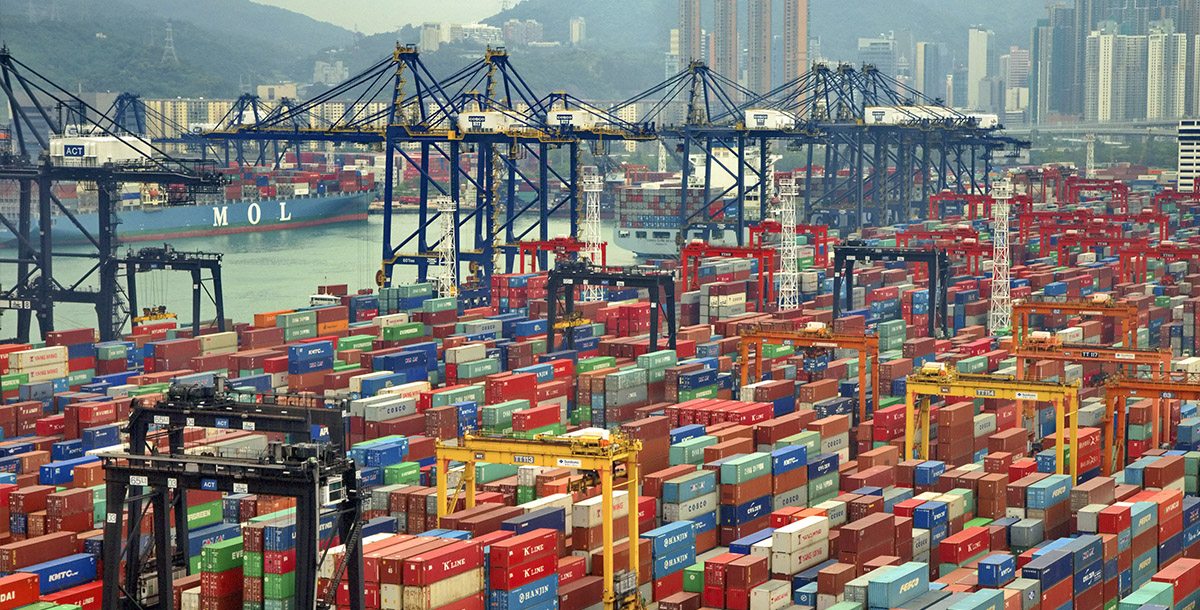
Hong Kong Slipping in World Container Shipping Traffic (and the Top Ten Ports)
The South China Morning Post reports on February 14, 2019 that Hong Kong continues to slip below other Asian port rivals in terms of container traffic, falling to seventh place for 2018, according to Drewry Shipping Consultants.
Hong Kong held the title of the world’s busiest shipping port until 2004, when it was eclipsed by Singapore. Today, it ranks seventh, falling behind Gaunghzhou in China and Busan in South Korea in 2018, according to 11 month figures and December estimates.
With some 90% of world trade carried by maritime shipping, let’s take a look at the top ten busiest ports in the world, according to Drewry Maritime Research.
- Shanghai
- Singapore
- Ningbo (China)
- Shenzhen (China)
- Guangzhou (China)
- Busan (South Korea)
- Hong Kong
- Qingdao (China)
- Tianjin (China)
- Jebel Ali (Dubai, UAE)
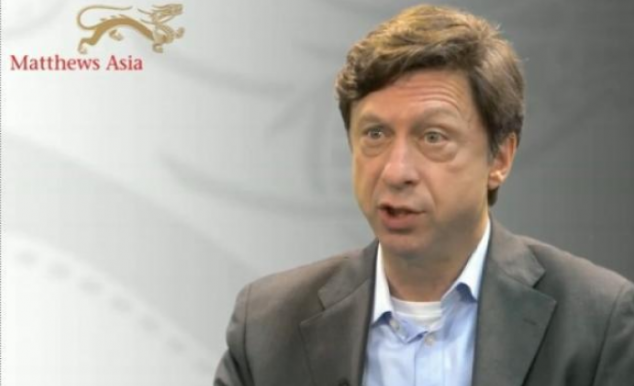
Andy Rothman of Matthews Asia: China Hard Landing “Not on the Horizon”
Andy Rothman is, in my view, one of the sharpest observers of China’s economy. His work is always a must-read. In the latest issue of Sinology, published by Matthews Asia where Andy works, he asks the question on many minds: when will the oft-discussed China collapse finally arrive? His conclusion: No collapse is imminent. Among the reasons: China’s economy has made significant steps toward rebalancing its growth story toward consumption (76.2% of GDP growth last year came from final consumption of goods and services) and away from state-led investment, and is far less reliant on net exports for GDP growth. In fact, in 2018, according to Rothman, the contribution to GDP growth from net exports was -8.6% (yes, negative!). He also points out that growth was not bad, but market sentiment was battered by US-China trade wars and policy uncertainty within China. That will likely change by the 2nd half of 2019, he says.
So, consumption is driving growth, net exports are less important to future growth, and state-led investment is no longer the key driver. This is a new structural China story that has been in the works over the past few years, but has crystallized last year, and Rothman lays it out very well.
Some excerpts from Rothman’s excellent newsletter below:
Has the China Collapse Finally Arrived?
“China has been on the verge of a hard landing for many years, according to some analysts. Will they finally be right in 2019? In this issue of Sinology, I explain that in the fourth quarter of 2018, China’s economic deceleration was not significantly sharper than I expected, and several policy changes should lead to stronger activity and market sentiment in the second half of this year. A hard landing is still not on the horizon.
There was not a sharp slowdown in the last quarter
Everyone paying careful attention to China should have expected the year-on-year (YoY) growth rates of almost every aspect of the economy to slow a bit last year, as that has been a consistent pattern for about a decade. The economy has become so large, and growth rates were so fast for so long, that this deceleration is inevitable.
What has worried many observers, however, is the perception that in the last quarter (4Q18), China’s growth rate slowed much more sharply than expected. With final data for 2018 now in hand, let me explain why that perception is not accurate.
Still the world’s best consumer story
Let’s start by examining the largest part of China’s economy—consumption.
Income growth is, of course, the foundation of consumer spending, and in 4Q18, inflation-adjusted (real) income growth slowed a bit, to 6.2% YoY, down from 6.9% in 4Q17. That degree of slowdown was within my expectations, and it is worth noting that last quarter’s pace was roughly the same as the 6.3% recorded in 4Q16.”
To read the full newsletter, go here

The Business of Chinese New Year 2019
Happy Chinese New Year 2019 to all New Silk Road Monitor readers! Chinese New Year is big business for national and foreign firms. Here’s a round-up of some Chinese new year “Year of the Pig” business coverage.
- Year of the Pig: in Muslim Malaysia, brands tread carefully for Chinese New Year, from the South China Morning Post
- Lunar New Year holiday to be litmus test of Chinese shoppers’ resilience, from the Japan Times via Bloomberg
- Three Things Foreign Companies Should Know About Chinese New Year – from China Briefing
- More clicking, but touch and feel still matter for the Lunar New Year – from Business Times, Singapore
- Chinese New Year set to give luxury retailers in London a sales boost – from the Evening Standard, London
To understand what the Chinese new year means to the national economy and to broader East Asia, check out this piece from CNBC last year
Some highlights from the CNBC piece below:
- Lunar New Year, popularly known as Chinese New Year, means major spending across Asia on food, red packets and travel.
- Red packets, which are gifts of money from married to unmarried people, have propelled the growth of China’s tech companies like Tencent.
- The week-long holiday is a time for Chinese travelers to go on vacation, and 6.5 million Chinese holidaymakers are expected to travel abroad this week.
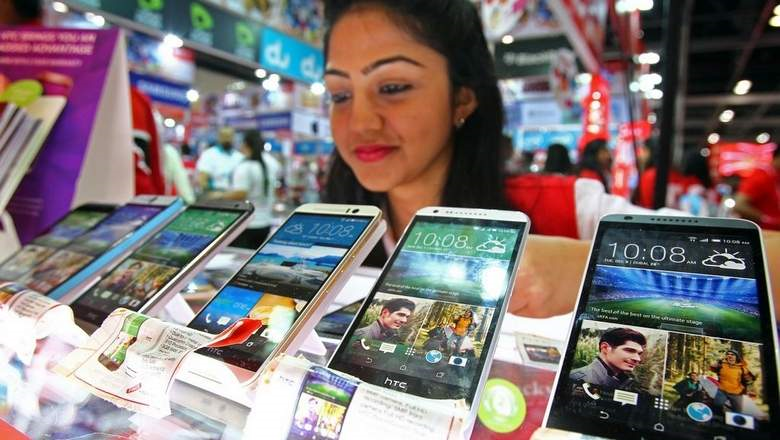
China’s Online Silk Road Grows in the UAE
There’s a great piece in the Abu Dhabi-based English daily, The National, that explores the rise of China’s tech players in the UAE. The piece quotes extensively from my friend, Sam Blatteis, who is one of the sharpest analysts and consultants on the New Silk Road beat with a Middle East/North Africa (MENA) focus. Some striking highlights from the piece:
- 1.3 million Chinese tourists visited the UAE last year
- Alibaba announced a $600 million “Tech Town” investment in Dubai “which would one day house 3,000 firms developing robotics, artificial intelligence, and mobile apps. It’s slated to be five times the size of the Pentagon and built near Dubai’s Jebel Ali port.”
- Sam Blatteis notes the distinction between the Chinese firms that chose UAE as their HQ versus those that chose Egypt: “The Chinese tech titans are accelerating at different speeds in the UAE. Those that have chosen to headquarter in the country (Alibaba, Huawei) for the Arab world are well ahead of those that have not: China’s answer to Google, Baidu, for instance, which headquartered in Egypt with about 40 employees at its height – seem to have left the Middle East approximately 18 months ago,” Blatteis says.
- The National writes: “The UAE’s smartphone penetration is the highest in the world at 73.8 per cent, with more than 90 per cent of the population having access to the internet. This has laid fertile ground for Chinese smartphone conglomerates to come knocking. Many of them were drawn to the UAE, in particular, for the focus on fifth generation connectivity, which is due to arrive in the UAE this year. Technology analysts estimate 5G connectivity will boost the GCC economy by $269bn over 10 years with cheaper, faster internet access and connecting devices through the Internet of Things.”
- Sam Blatteis again: “The intense competition coming from the Far East has left western companies fighting for attention. “Nearly every large Chinese tech company is cementing long-term ties with the UAE tech sector, looking at the Emirates as a hub for finance and technology investments, not simply a customer for ads, marketing and users. Simply put, China is rewriting the rules on how to rise in influence in the Middle East. Because of the UAE’s goliath-sized ports and the country’s geographic position almost sandwiched between Saudi Arabia to its West and Iran to its East, the UAE is thinking at-scale too about how to contribute to both Silk Road routes.”
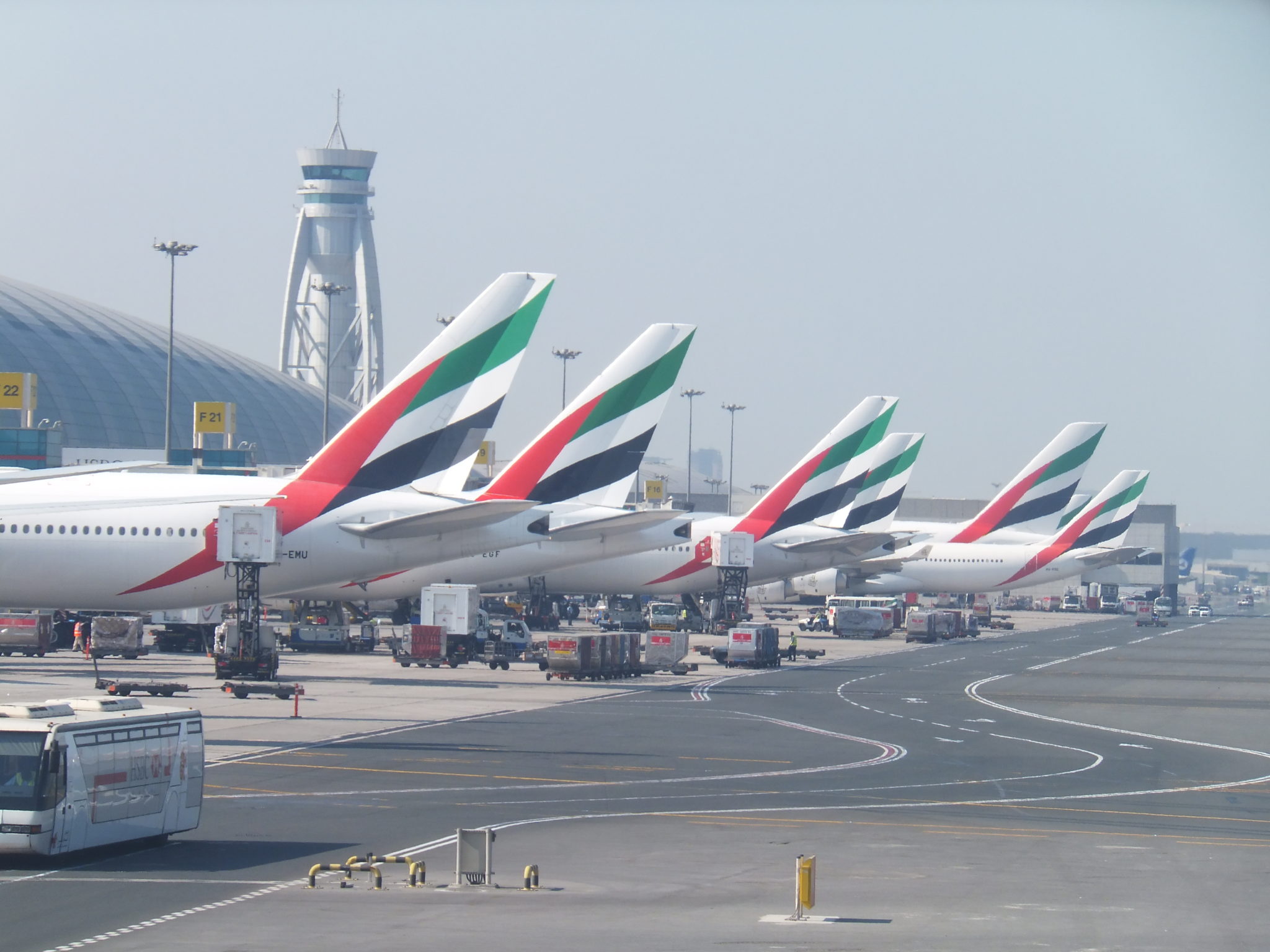
Dubai Retains Spot As Busiest International Airport
It’s appropriate, it seems, to begin the first blog post of the (New) New Silk Road Monitor with a story about airports and Dubai and a Top Ten List. Aviation and logistics will be a perennial theme in these pages, and my own New Silk Road journey has been enhanced over the years by multiple visits (and one posting) to the trade, tourism, and logistics hub of Dubai, which I called the unofficial hub of the New Silk Road as far back as 2007 in a Washington Post column. You’ll also see that I like Top Ten lists. So, here goes:
Dubai International Airport hit 89.1 million international passengers in 2018, according to airport officials. This keeps Dubai comfortably in first place for the 5th year in a row as the world’s busiest international airport. Dubai surpassed London Heathrow in 2014 and it has never looked back (On a total passenger basis, including domestic, Atlanta-Hartsfield and Beijing International remain larger, but Dubai reigns supreme for international passengers and is inching toward Beijing and Atlanta-Hartsfield in absolute numbers of passengers as well).
I’m a regular visitor to Dubai and a regular connector via Dubai International Airport to other destinations and I can say that if Dubai is emerging as a major New Silk Road trade hub, with its robust trading relationships across Asia and Africa and the Middle East, then Dubai International Airport might be the Caravanserai of the New Silk Road. The number of nationalities, colors, and national dresses in the airport is dizzying, and the airport is crying out for anthropological study (Phd students, take note!).
Part of the story is the global reach of Emirates Airline, but you can’t get to 89.1 million passengers with just Emirates, so the other part of the story is the Open Skies policy that leads Dubai International to host 80 airlines serving 214 cities.
Here’s the top ten list for 2017 for world’s busiest international airport with the number if international passengers. When 2018 numbers are tallied, I’ll post those too.
World’s Busiest International Airports
- Dubai, AE (DXB) – 87.7 million
- London, GB (LHR) – 73.1 million
- Hong Kong, HK (HKG) – 72.4 million
- Amsterdam, NL (AMS) – 68.4 million
- Paris, France (CDG) – 63.6 million
- Singapore, SG (SIN) – 61.57 million
- Incheon, KR (ICN) – 61.52 million
- Frankfurt, DE (FRA) – 57.12 million
- Bangkok, TH (BKK) – 48.8 million
- Taipei, TW (TPE) – 44.4 million
For the rest, see Airports Council International
DXB Vitals
- 526 Check-In Counters
- 80 Airlines Operating
- 220 Airports Served
- 214 Cities Served
- 94 countries Served
Source: Dubai Airports

